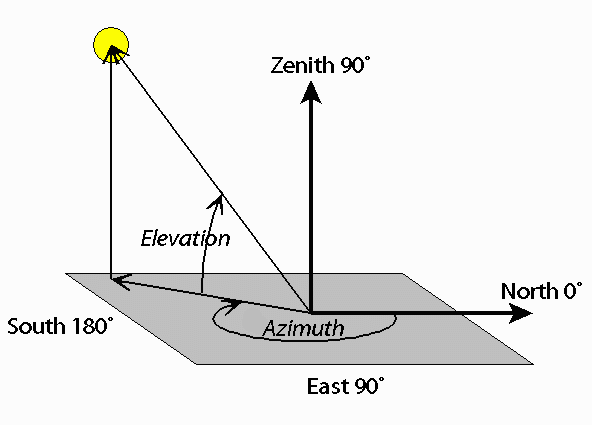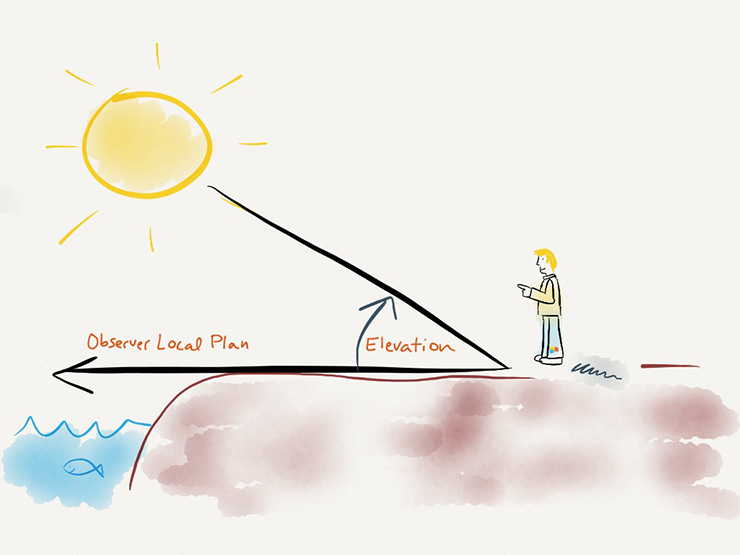Azimuth and Elevation are two coordinates that define the position of a celestial body in the sky as viewed from a particular location at a particular time. Azimuth tells you which direction to face, while Elevation tells you how high up to look. Both are measured in degrees.
Azimuth ranges from 0° to 360°. It starts with North at 0°. As you turn to your right (in a clockwise direction), you’ll face East (90°), then South (180°), then West (270°), and finally return to North (360° and also 0°). So if the Azimuth for your celestial object is 45°, it means the object is northeast of you.
Elevation is also measured in degrees. A celestial object just barely rising above your horizon would be at 0° Elevation, while a celestial object directly overhead would be at 90° Elevation (also known as “the zenith”).
In the diagram below, the yellow circle represents the celestial object. It has an Azimuth of about 200° (southwest of the observer) and an Elevation of about 60° (about 2/3 of the way up in the sky).

As shown in the figure below, the observer’s current position is used as the origin. An object due north has an azimuth of 0°, an object due east has an azimuth of 90°, an object due south has an azimuth of 180°, and an object due west has an azimuth of 270°.

Similarly, as shown below, the elevation angle of a celestial body is the angle between the direction of the geometric center of the celestial body and the local horizon of the observer.




